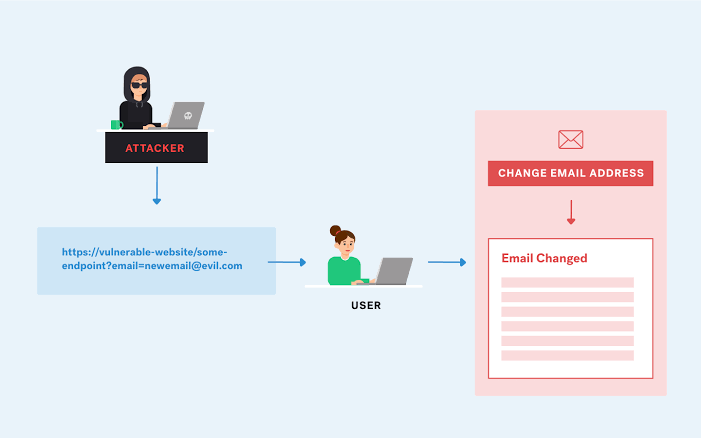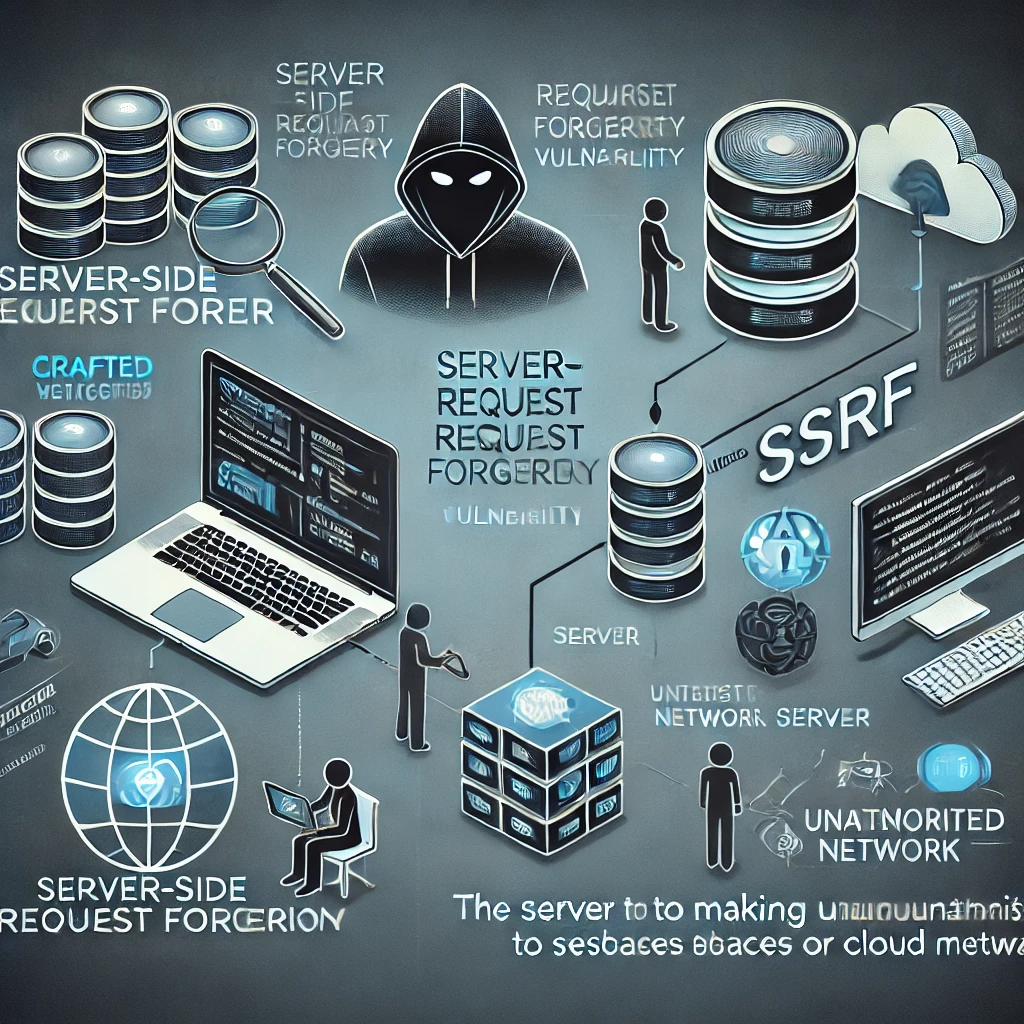Cross-Site Request Forgery (CSRF): A Comprehensive Guide
Cross-Site Request Forgery is a serious vulnerability that can compromise the security of web applications

Cross-Site Request Forgery (CSRF) is a common web security vulnerability that exploits the trust a web application has in a user’s browser. This guide provides a detailed overview of CSRF, how it works, its impact, and how to protect against it.
What is Cross-Site Request Forgery (CSRF)?
CSRF is a type of attack where an attacker tricks a victim into performing unintended actions on a trusted web application. These actions are executed without the user's consent and often involve sensitive operations like changing account details, transferring funds, or deleting data.
How CSRF Works
-
User Authentication: The victim logs into a trusted website (e.g., a banking application).
-
Session Cookie: The website stores a session cookie in the user's browser for authentication.
-
Malicious Request: The attacker crafts a malicious request (e.g., a form submission) and embeds it in an email, a malicious link, or another website.
-
Exploitation: When the victim interacts with the malicious content, their browser sends the request along with the authenticated session cookie to the trusted site, executing the attacker's desired action.
Real-World Example of CSRF
Suppose a user is logged into their bank account. An attacker sends them a link:
<img src="https://bank.com/transfer?to=attacker&amount=1000" />
If the user clicks the link, their browser sends the request to the bank, unknowingly transferring money to the attacker.
Why CSRF is Dangerous
-
Exploitation of Trust: The server trusts the user's browser without verifying the origin of requests.
-
Sensitive Actions: CSRF often targets high-impact actions like data modifications or financial transactions.
CSRF Protection Techniques
1. CSRF Tokens
-
Generate unique tokens for each session or request.
-
Verify tokens on the server to ensure the request's authenticity.
Example:
<form action="/update" method="POST">
<input type="hidden" name="csrf_token" value="unique_token_here" />
<button type="submit">Submit</button>
</form>
2. SameSite Cookies
-
Set cookies with the SameSite attribute to restrict them from being sent in cross-site requests.
Example:
Set-Cookie: session=abc123; SameSite=Strict;
3. Origin and Referer Header Validation
- Check the Origin or Referer headers in requests to ensure they match the trusted domain.
4. User Authentication with Multi-Factor Authentication (MFA)
- Even if a CSRF attack occurs, MFA can prevent unauthorized actions.
5. Implement CORS (Cross-Origin Resource Sharing)
- Configure CORS to allow only trusted domains to make requests to your server.
CSRF in Modern Frameworks
Django: CSRF middleware is enabled by default. Use the {% csrf_token %} tag in forms.
Spring Boot: CSRF protection is enabled in Spring Security by default.
Express.js: Use libraries like csurf for CSRF protection.
Detecting CSRF Vulnerabilities
Manual Testing: Identify forms and actions that do not validate CSRF tokens.
Automated Tools: Tools like Burp Suite and OWASP ZAP can help identify CSRF vulnerabilities.
Summary
Cross-Site Request Forgery is a serious vulnerability that can compromise the security of web applications. Implementing protection techniques like CSRF tokens, SameSite cookies, and header validation can help safeguard against these attacks. Developers must stay vigilant and incorporate security measures in the development lifecycle to mitigate CSRF risks.
By understanding CSRF and its countermeasures, developers and organizations can strengthen their web application security and protect user data effectively.
Disclaimer for
The content of this article is provided for informational and educational purposes only. While every effort has been made to ensure the accuracy and reliability of the information presented, Now Times cannot guarantee that all methods or recommendations described will be effective in every scenario.
This article is not a substitute for professional advice, and it is essential to consult a qualified cybersecurity expert when implementing security measures or mitigating vulnerabilities. Readers are responsible for using this information responsibly and ethically. Now Times shall not be held liable for any damages resulting from the use or misuse of the material provided in this guide.
For questions or further clarification, feel free to contact us.
Leave a Comment
Releted Articles

Understanding SSRF Vulnerability: A Complete Guide
SSRF is a critical vulnerability that can compromise internal systems and expose sensitive data.

The Ultimate Guide to SQL Injection (SQLi)
SQL Injection remains a significant threat to web application security.

Understanding Cross-Site Scripting (XSS): A Critical Web Vulnerability
Cross-Site Scripting is a significant threat to web security, capable of causing severe damage to both users and businesses.

Web Security : Safeguarding the Digital World
In today’s interconnected world, web security is more critical than ever. As businesses and






0 comments
There is no any command yet!